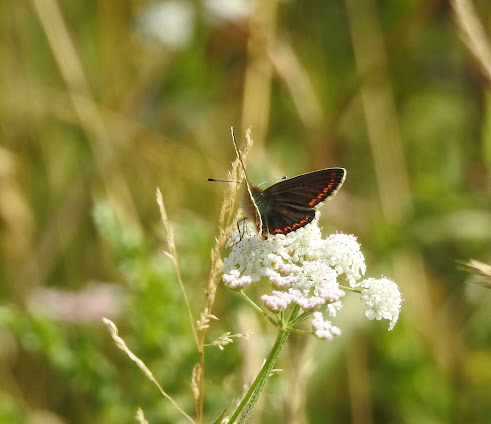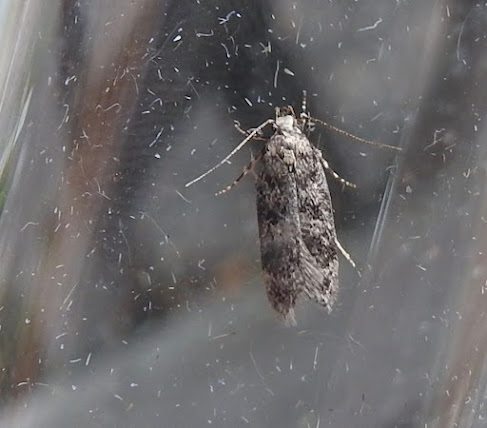This morning's visit to the patch was pretty disappointing. The weedy field has been mowed, leaving the usual bits in the middle. The flash field contained nearly 50 Lapwings and not a lot else. A Kingfisher was partly hidden on its perch at the Otter Pool.
I should have seen a Purple Hairstreak, but the few small butterflies at the top of some oaks refused to settle, and so had to be left as unconfirmed. Better views were had of a few newly emerged Brown Argus butterflies.
 |
| Brown Argus |
As for dragonflies, most of the expected species were on the wing including a Black-tailed Skimmer which like most of them refused to settle. There were also many mating pairs of Common Darter at the dragonfly pond.
 |
| Common Darter |
If all this sounds like I'm padding it out a bit, well I'm afraid I am. I ended up identifying thistles, Creeping Thistle and Spear Thistle, both much appreciated by the resident flock of Goldfinches.
Fortunately I own a moth trap, and it will be going out tonight. It promises to be a warm and muggy evening, so there should be plenty.
And indeed there were. The running total stands at 157, but may rise this evening when any that escaped into the nooks and crannies of the utility room will no doubt reappear. I ended up with two micros new for the garden (with a third if you believe in the infallibility of Obsidentify...which I don't).
The best moth though was a second for the garden. A Tree-lichen Beauty is still rare in these parts, but is likely to have established itself recently on its march north.
 |
| Tree-lichen Beauty |
Definitely new for the garden were Double-striped Tabby Hypsopygia glaucinalis, and Pine Leaf-mining Moth Clavigesta purdeyi. The former was photographed on the fence early in the morning and made a sharp exit before I could get a better look.
 |
| Double-striped Tabby |
 |
| Clavigesta purdeyi |
I don't get the sense that either of these new ones is particularly scarce. However, the one the app thought was 97% certain to be a Bryotropha basaltinella is quite a scarce moth (being increasingly detected under microscopic analysis). I must say I did think it looked more blotchy than the more common Bryotropha domestica from which it cannot be safely separated.
 |
| Possible Bryotropha basaltinella |
Best of the rest were Common Rustic ag (13 of them), Canary-shouldered Thorn, Dusky Thorn, Small Phoenix (second for the garden), Cydia splendana, and Lesser Broad-bordered Yellow Underwing ( seven of them), and Silver Y (two, and a migrant species to boot).
No comments:
Post a Comment